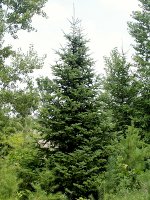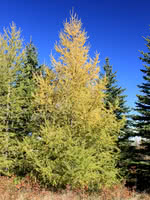Mon-Fri 9am - 5pm Mountain time
Siberian Larch vs Balsam Fir
Abies balsamea
Larix sibirica
Balsam Fir - best known as a "Christmas tree" - doesn't just look great in living rooms; it's a terrific tree for your yard too!
This fir grows tall and narrow. Balsam Fir is cold hardy, shade tolerant, and will thrive in most soil types and moisture levels.
Siberian Larch is a large, cold hardy conifer. Like the Tamarack, its needles turn golden yellow and drop in the fall, and it is able to handle saturated soils.
If you are looking for a long-lived tree for your large property or shelterbelt with quite wet soil, this is the tree for you.
This variety is often used on the south side of a shelterbelt to let sunlight in during the winter and to provide protection or shading during the summer.

